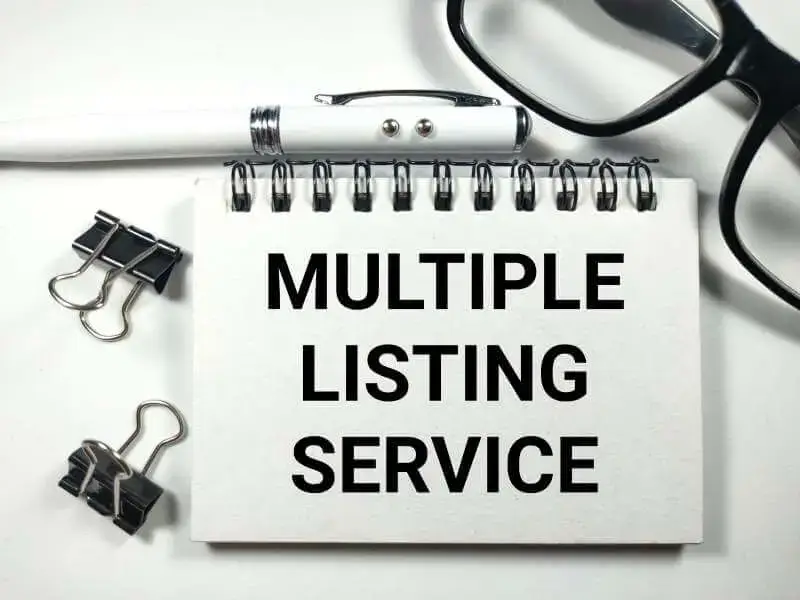Are you a land owner considering selling your property? You might be looking for ways to maximize your return by saving on traditional real estate commissions. While hiring a full-service agent is one option, listing your land on the Multiple Listing Service (MLS) yourself using a flat fee service is another popular alternative. This guide focuses specifically on how Flat Fee MLS works for selling land, covering the unique pros, cons, and costs involved when listing vacant land or acreage.
What is the MLS and how to use it without a real estate agent for land
First of all, MLS stands for multiple listing service, and there isn’t just one MLS. There are actually hundreds of local MLS serving different areas and sometimes overlapping each other. These databases are the primary tool used by real estate professionals to share property information and facilitate sales. For someone looking to list land, getting it into the local MLS is crucial for broad exposure.

According to the National Association of Realtors, “MLSs are private databases that are created, maintained and paid for by real estate professionals to help their clients buy and sell property.”
In other words, an MLS is a database for realtors to post their listings for sale, which can then be seen by all the other realtors participating in that MLS. The public can also then see the mls land listings through websites like Realtor.com and Zillow that publish listings directly from the MLS databases. If you want to list land effectively to reach the widest pool of potential buyers, getting it on the MLS is key. This is true whether you have a large parcel of undeveloped land, a small building lot, or even land flat and ready for construction.
In short, MLSs are designed to help realtors and their clients buy and sell real estate. What not everyone knows is that it’s also possible to list your property, including vacant land and lots, on the MLS without a real estate agent using a flat fee MLS company. This allows you to gain significant exposure without paying a traditional listing commission.
What is a flat fee MLS listing service for land?
A flat fee MLS listing refers to an arrangement where the land seller will pay a fixed fee to a broker to have their property listed on the MLS instead of paying that broker a percentage-based listing commission. The fee is paid upfront, so unlike with a traditional listing arrangement, the seller incurs a cost regardless of whether the land sells.
Note that it’s typical (but not required) to still offer a commission to a buyer’s agent with a flat fee listing service. In this case, the total commission paid by the seller is reduced by approximately half, but not eliminated. This is standard practice for most mls land listings to incentivize buyer agents.
Why list your land for sale on the MLS without a realtor?
Potential commission savings for land
The most compelling reason for land sellers to choose a flat fee service is often the potential savings. While home sales commissions typically range from 5-6%, commissions for selling land, especially undeveloped or rural parcels, are often higher, often ranging from 8% to 10%. By eliminating the listing agent’s portion of this higher commission rate, you could save hundreds or even thousands of dollars compared to a traditional sale. The decision to list land with a flat fee is frequently driven by this substantial cost difference.
Get the most exposure for your land listing
The main reason to list your land for sale on the MLS is exposure. The MLS is the predominant way that real estate is advertised for sale, so if you don’t take advantage of the MLS you’re potentially missing out on buyers. This is especially true for mls vacant land, as agents and serious buyers actively search these databases for specific property types, zoning, and features.
The exposure of the MLS is magnified because popular, high-traffic websites like Zillow, Realtor.com, and potentially land-specific portals automatically publish mls land listings and display them more prominently than for sale by owner listings. This ensures your land listing reaches a wide audience.
Attract high-quality buyers for your land
Another benefit of listing your land for sale on the MLS compared to free options like Craigslist and Facebook Marketplace is that it tends to attract higher-quality buyer leads. The buyers that will contact you about your MLS listing usually have a real estate agent representing them, which means they’re taking their search seriously and are likely pre-qualified. Even buyers not represented by agents who are searching MLS-fed sites are generally more serious and less likely to be “tire kickers” interested only in heavily discounted land flat or otherwise.
Fringe benefits (may vary by service)
Considered to be “a la carte” services, flat fee listings often come with perks such as for sale signs and the contract forms you’ll need once you’ve found a buyer. The flat fee real estate broker may also be available to answer questions and provide limited support in your effort to sell the land. These extra tools can be particularly helpful when you list land yourself.
Pros and cons of flat fee listings for selling land
While the benefits are compelling, using a flat fee service to list land also comes with its own set of considerations:
Pros of flat fee MLS for Land
- Access to the main place for advertising real estate for sale (MLS).
- Land listing added to high-traffic websites like Realtor.com and Zillow.
- Ability to attract high-quality, agent-represented buyers specifically looking for land.
- Potential for significant cost savings by eliminating the high land listing commission.
- Built-in support like contract forms and basic guidance from the broker.
Cons of flat fee MLS for Land
- Upfront fee to list, regardless of sale.
- Creating the land listing is particularly tedious and requires specific knowledge. Listing land on the MLS demands detailed information about zoning, utilities (water, sewer, power, gas), access, soil types, topography, surveys, and potentially environmental factors. Gathering and accurately entering this data is more complex than listing a standard house and requires careful attention to detail.
- Still typically need to budget for paying a commission to the buyer’s agent to ensure they show your property. While negotiable, this is standard practice for mls land listings.
- Listing is typically for a limited time period. Keep in mind that selling land often takes longer than selling a home. A 6-month listing duration might not be sufficient, requiring a renewal fee.
- You, as the seller, are responsible for handling inquiries, showings, negotiations, and coordinating the closing process. This requires a significant time commitment.
How much does a flat fee MLS service cost to list land?
Flat fee listings generally cost between $100-$500, but prices can vary depending on the state and the level of service included. They vary by region and by how long the listing will last, with packages ranging from 3 to 12 months. When choosing a listing duration to list land, keep in mind that in many cases 6 months will not be long enough to sell a parcel of land; a 12-month option is often a better investment. At the end of the period, there is usually the ability to renew the land listing for an additional fee.
Some flat fee listings also charge a small listing broker commission percentage, typically around 0.25% at closing. This won’t be a deal-breaker for many land sellers, but for higher priced properties this can end up costing about as much as the flat listing fee itself. For example, selling land for $50,000 with a 0.25% listing broker commission will cost you $125 in addition to the upfront fee.
Finally, it’s customary, but usually not a requirement, to offer a buyer agent commission. That’s why flat fee listings are mostly about reducing or eliminating the listing agent’s commission, which is particularly high for land sales. A reasonable range for buyer agent commissions for land is typically 2.5 to 5%. Keep in mind that without offering a commission, an agent representing a buyer client has no incentive to take an interest in your mls vacant land listing.
Calculate your potential savings when selling land
The simplest way to show what your potential savings could be with a flat fee listing when selling land is to provide an example. Let’s say you’ve determined the asking price for your land will be $50,000. If you were to list this property the traditional way through a realtor, you might pay a total sales commission of 10%, or $5,000 in this example. While it’s negotiable, a sales commission of 8-10% is common for land sales and higher than home sales where 5-6% sales commission is typical.
It’s also common that the listing agent will get more than half of the total commission, so in this example let’s say the listing agent received 5.5% of the 10% commission or $2,750 and the buyer agent received 4.5% or $2,250.
In a flat fee arrangement, you wouldn’t have a listing agent commission. You would pay a flat fee upfront (let’s say $250 for a 12-month package with a sign, which is typical for listing land). You would still offer a 4.5% commission to a buyer agent if one brings a buyer, and the property sells for the same $50,000 sales price. Your total costs would be the $250 flat fee + the $2,250 buyer agent commission = $2,500. In this example, using a flat fee service saved you $2,500 compared to listing it traditionally through a realtor, specifically due to eliminating that higher land listing commission.
Finding the best flat fee MLS listing service for your land
There are many flat fee MLS listing services to choose from, operating at national or state levels. You can find websites offering these services by searching for “flat fee MLS listing [Your State]” or “list land on mls [Your State]”.
One thing to note is that while these websites may have different ways of getting you there, they’re all fundamentally offering the same core service: access to the MLS via a licensed broker. Because there’s a lot of competition, expect to find wide ranges on prices and offers.
Comparing Flat Fee Services for Listing Land
Since the core service is similar, services try to differentiate with features. When choosing a service to list your land, look for these things:
- Is there a listing broker commission percentage charged at closing? (Try to avoid this if possible).
- Is there a minimum buyer agent commission percentage required? (Understand what is standard for land in your area).
- How long will the listing last? (Go for 12 months for land in most cases).
- What does it cost to renew the listing if it doesn’t sell within the initial period?
- Number of photos you can upload (Important to show off the features of your land).
- Will they forward phone calls or buyer inquiries to you? (Essential for you to manage leads).
- Are necessary contract forms offered? (Look for forms specific to vacant land if possible).
- Do they provide yard signs suitable for a land plot?
- Do they have experience specifically with mls vacant land listings? Their expertise might help ensure your listing includes all necessary fields.
It’s also frequent for these websites to offer specials and deals, so you’ll want to do your own research. Some services like ByOwnerMLS.com and BrokerDirectMLS.com are nationwide, while others are state or region specific. Ensure the service is licensed to operate and access the MLS in the specific location of your land.
Conclusion - using a flat fee MLS to sell land
Selling land is really about marketing and getting enough exposure for your property. Although the internet has opened up many other channels for selling land, the MLS is still the main way real estate professionals find properties for their buyers. For that reason, most sellers should plan on listing their property on the MLS, whether that means listing it traditionally with a realtor or through a flat fee MLS company.
Using a flat fee service to list land can provide real savings, particularly by avoiding high land listing commissions. However, it also requires significantly more work on your part, from accurately entering the detailed information needed for a land listing to managing inquiries and the entire transaction process yourself. Weigh the potential savings against the time and effort required to successfully list land via this method.








